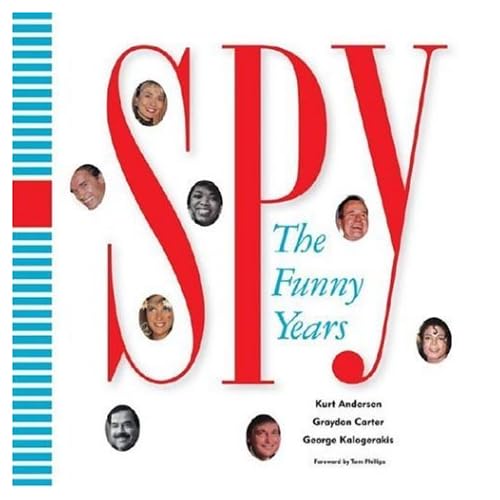Spy vs Spy
If, like me, you would be curious about what happened to everyone behind the irreverently influential SPY magazine, The New York Times provides a helpful, hard-to-read, SPY-like chart in its print version today. And not online -- I keep pointing out articles that aren't online; it's just coincidental so far, but it tells you about what I read.
 It so happens I own every issue of SPY magazine ever printed from 1986 to 1998, yes, even the later, sadder, lousier ones, long after Kurt Andersen and Graydon Carter had sold the thing. OK, I own all except one, June 1987, if anyone has a copy and is interested in selling it, please contact me. I'm not a collector; I'm not sentimental about stuff. Obviously, I do have a lot of books, but I regularly cull them to try to keep them from conquering the world.
It so happens I own every issue of SPY magazine ever printed from 1986 to 1998, yes, even the later, sadder, lousier ones, long after Kurt Andersen and Graydon Carter had sold the thing. OK, I own all except one, June 1987, if anyone has a copy and is interested in selling it, please contact me. I'm not a collector; I'm not sentimental about stuff. Obviously, I do have a lot of books, but I regularly cull them to try to keep them from conquering the world.
But SPY was different. Now that a SPY retrospective has come out -- SPY: The Funny Years -- there has been the requisite praise and chatter about how the magazine anticipated David Foster Wallace's fascination with footnotes, how it started a revolution in print design with all of its tiny type and charts and doohickies and, above all, most importantly, how it was the precursor to All Things Snarky on the web. For those of us who find the relentless bitchiness at Defamer or Gawker thin and tiresome after a short while, this last is not exactly a compliment.
That's because, with a variety of editors and writers, including non-bitter humorists such as Roy Blount, Jr., Ellis Weiner and Vince Passaro (novelist: Violence, Nudity, Adult Content),Spy was not simply a list of sniper targets. In fact, in its early years, it was often called "The New Yorker with bite" (the cover even used to say "The New York Monthly"), and it had a high degree of Manhattan-centric whimsy about it. It was only in the '90s that it became known as the anti-Vanity Fair, the publication that, instead of enshrining celebrities as Bruce Weber-photographed gods and goddesses, cheerfully brought them down a few pegs.
Even so, it was too sophisticated, too rich, to be reducible to mere snark -- until, yes, its later years. For those who don't know anything about what I'm talking about, you need to crack open the new anthology, although I should warn you that in the highest traditions of SPY, it's a handsomely done production with far too much type that is almost impossible to read. For those who do know what SPY was about, you'll agree, I think, that it was a finer, more intelligent humor magazine than National Lampoon and certainly deserves the anniversary look-back appreciation, no matter how predictably shabby and media-driven the cash-in motivations might be.
Snark.
But I'm serious about that June '87 issue. Contact me.
Categories:
Blogroll
Critical Mass (National Book Critics Circle blog)
Acephalous
Again With the Comics
Bookbitch
Bookdwarf
Bookforum
BookFox
Booklust
Bookninja
Books, Inq.
Bookslut
Booktrade
Book World
Brit Lit Blogs
Buzz, Balls & Hype
Conversational Reading
Critical Compendium
Crooked Timber
The Elegant Variation
Flyover
GalleyCat
Grumpy Old Bookman
Hermenautic Circle
The High Hat
Intellectual Affairs
Jon Swift
Laila Lalami
Lenin's Tomb
Light Reading
The Litblog Co-op
The Literary Saloon
LitMinds
MetaxuCafe
The Millions
Old Hag
The Phil Nugent Experience
Pinakothek
Powell's
Publishing Insider
The Quarterly Conversation
Quick Study (Scott McLemee)
Reading
Experience
Sentences
The Valve
Thrillers:
Confessions of an Idiosyncratic Mind
Crime Fiction Dossier
Detectives Beyond Borders
Mystery Ink
The Rap Sheet
Print Media:
Boston Globe Books
Chicago Tribune Books
The Chronicle Review
The Dallas Morning News
The Literary Review/UK
London Review of Books
Times Literary Supplement
San Francisco Chronicle Books
Voice Literary Supplement
Washington Post Book World
